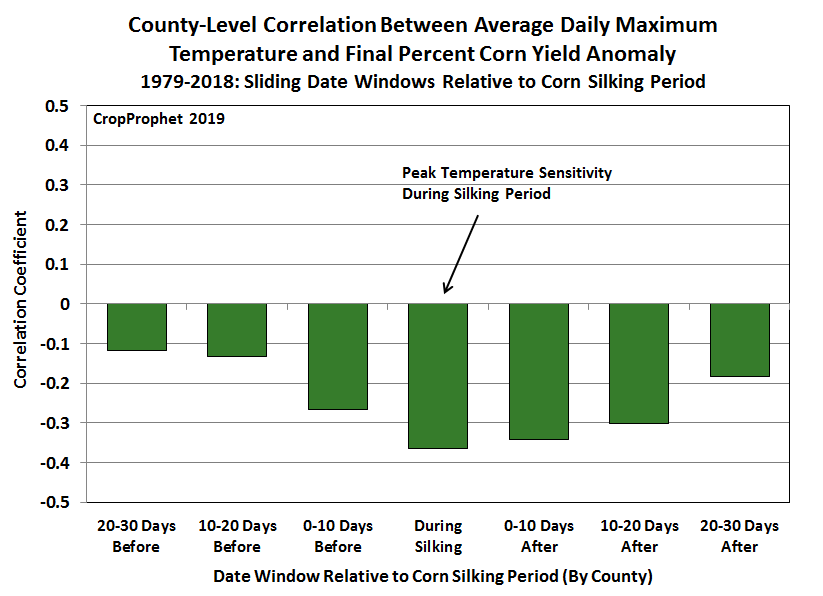Heat Waves and Corn Yield
Heatwaves and corn yield have a potentially important relationship but the timing matters. There has been significant discussion recently regarding the possible impact of the developing heatwave on the corn yield forecast. While the heat will be very excessive for a few days, it is occurring prior to corn pollination (silking) in most growing areas, and therefore the yield impacts will be less than they would be if silking was well underway. As of July 14, only 17% of the crop was reported as silking, which is about 7 days behind the 10-year normal, and the delay is somewhat greater in Illinois and Indiana.
To demonstrate the importance of timing of heatwaves on corn yield, the chart below shows the correlation between final yield anomaly and average daily maximum temperature during 10-day windows either side of the silking period. Historical silking dates are estimated for each county for 1979-2018, with the silking period defined as the window of time in which silking advances from 20% to 80% of the crop. Daily county-level temperature data are then used to obtain the county-specific conditions in 10-day date windows either side of the silking period.

The results indicate that the sensitivity of corn yield to temperature is greatest during the silking period, and there is less impact from unusual temperatures either before or after silking. Interestingly there is a marked asymmetry, with sensitivity increasing quickly as silking approaches but not diminishing quickly thereafter. According to these results, if unusual heat arrives at least 10 days before silking, then yield impacts are quite minimal, and this will be true with the current heatwave for the more northerly growing areas, and also for the most heavily delayed areas farther south, where silking is still at least two weeks away.
Request a trial of CropProphet for market-leading corn yield forecast.